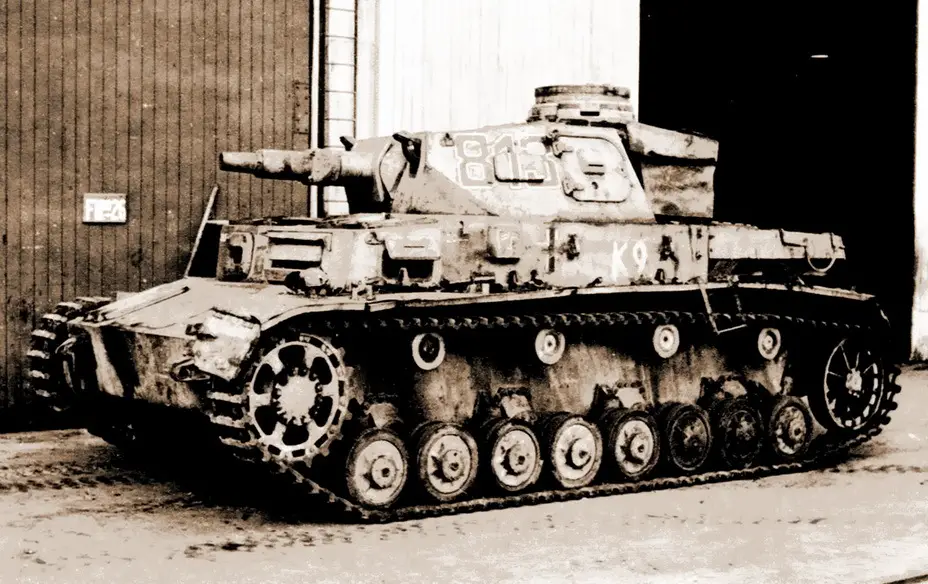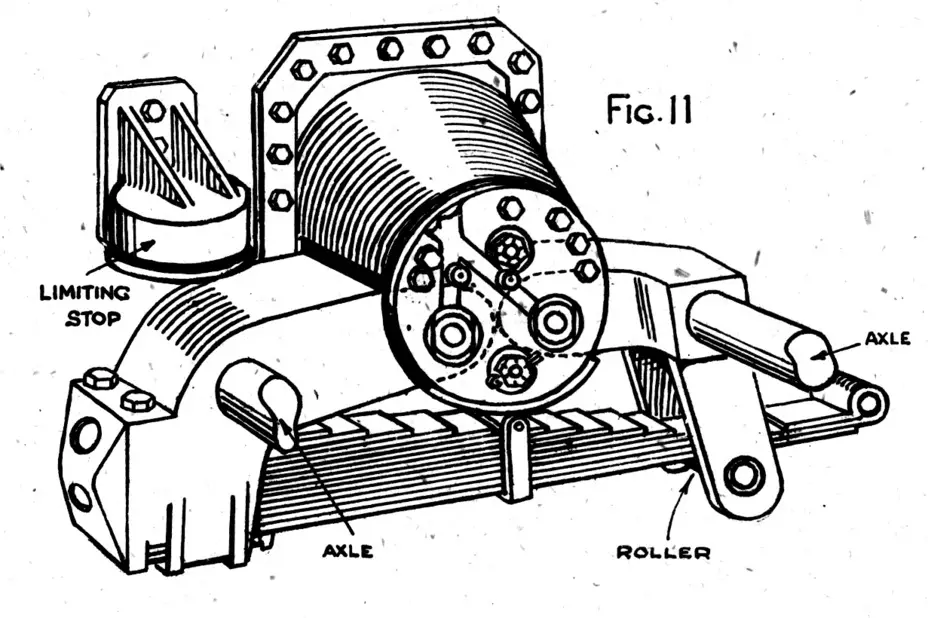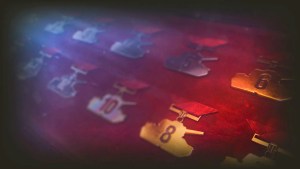Panzer IV: Big, weak and uncomfortable
15 min readThe history of the German tank Pz.Kpfw. IV can hardly be called simple. Created as a support vehicle, it had no pretensions to a better armour plating, gun or ammunition load. Nevertheless, by the time the Rommel corps landed in Africa, the Pz.Kpfw. IV was the most powerful tank of the Wehrmacht, thus it did not go unnoticed by British intelligence.
Meeting in Africa
Similar to the case of the Pz.Kpfw. III, in the beginning, the British had limited knowledge about the Pz.Kpfw.I V. They knew by hearsay that the tank was heavier than the Pz.Kpfw. III. In intelligence reports, it was called a medium tank, while the Pz.Kpfw. III was classified as a medium-light one. It is worth mentioning that British tankers encountered the Pz.Kpfw. IV in 1940 in France, however, due to a rapid defeat of the Expeditionary Force, they had no possibility to get a sample for a study. The British didn’t even have accurate information on its armour plating and ammunition load. Nonetheless, they issued a drawing with its image and on December 16, 1940, they sent it to an armoured school.

Since high-intensity combat operations against the Germans on the continent ceased, for a long time the British did not have any data on new tanks. In March 1941, a “reliable source” announced that the Germans now had a type of an “IVa” tank. British experts decided that that was probably a command vehicle equipped with the Pz.Kpfw. IV chassis, but no other information was received. Due to the almost complete lack of information about the most dangerous enemy tank, the situation was alarming: British tankers were to meet a nearly unfamiliar enemy.
The Pz.Kpfw. IV first appeared in North Africa in the spring of 1941. Formed on February 19, the Afrika Korps had two units: 15th Panzer Division and 5. Leichte Division. They went into battle by the end of March, totalling, among other tanks, only 49 Pz.Kpfw. IV, which were numerically inferior to the Pz.Kpfw. III.
The British got their first trophy pretty quickly: in early May, they could inspect an abandoned Pz.Kpfw.IV and get some information about it. The tank front hull and turret armour were 30 mm, and its side armour was 20 mm. The armour of its command pod was also 20 mm, its base and its engine compartment roof were covered by a 10 mm armoured plate. The front hull was shielded with an additional 30 mm plate, while its sides were partially shielded with 20 mm plates. Its turret was not shielded.
The tank armament consisted of a 75-mm cannon and presumably of two 7.91 mm Spandau LMG, its ammunition load counted 83 explosive fragmentation projectiles. The quality of the tank armour plating was estimated as very low, even worse than that of Czech tanks, but it was assumed that other vehicles could have better armour plating. It was noted that the Boys anti-tank rifle penetrated 25 mm of German armour at a distance of 450 yards (410 m) in combat conditions, which made the tank sides very vulnerable, despite partial shielding. As its welds were very weak too, they could crack even under fire of light weapons.
Its maximum estimated speed was 37 km/h. According to the calculations of British experts, the Pz.Kpfw.IV could overcome a 3.2 meters wide anti-tank ditch and climb a 68 cm high obstacle. The trophy tank fuel distance was estimated to be 120 km, though, according to the British, this characteristic could be overstated.

In the middle of June, the British fired a QF 2 pounder mounted on a Cruiser Tank Mk.IVA. When firing at the tank sides at ranges of 500–700 yards (460–640 m), armour-piercing shells penetrated its turret and hull. At a distance of 1100 yards (1000 m), projectiles could penetrate its side armour, but not the opposite side. Shooting at the tank’s shielded front armour from a distance of 500 yards led to a slightly worse result: five projectiles out of six.
At a distance of 500 yards, a QF 2 pounder could penetrate the turret front: three projectiles exploded inside the tank, while three other projectiles penetrated its stern. At a distance of 700 yards, the tank front hull was blasted, and the shells left 10-15 mm deep dents in its stern armour. At a distance of 1100 yards, it was still possible to penetrate the turret front armour.
The report also described the experience of using anti-tank No. 74 against the Pz.Kpfw.IV in combat conditions. It proved impossible to penetrate the tank in this way, however, it was possible to disable it by placing a grenade in a vulnerable place: an episode, in which British scouts tracked down a lone tank at night, captured the crew and burned the Pz.Kpfw.IV, blowing up grenades on its engine compartment roof was given as an example.

British experts assumed that the Pz.Kpfw.IV was shielded based on the results of a study of captured QF 2 pounders captured in France. They noted that shielded tanks may have been protected against early two pounder armour-piercing shells, but the new ones closed the Germans the door on survival. The same report mentioned that the Germans had heavy Pz.Kpfw.V, Pz.Kpfw.VI and Pz.Kpfw.VII tanks. The speed of Pz.Kpfw.IV was estimated at 25 km/h when driving independently (this limit was indicated on the driver’s dashboard) and 15 km/h while in a column.
Twice unlucky
Soon the British got a moving Pz.Kpfw.IV. It was taken to the Experimental Department of Tank Design and Experiment on November 3, 1941, though not without incident. The tank was in good order when it was captured in the battle for Tobruk, but on its way, the ship carrying the captured tank was attacked by the Luftwaffe. As a result, at the time of its unloading in the port, the tank had combat damage because was seriously damaged by a fire and extinguished with a mixture of fire extinguisher and water. There was no chance of any tests, so the British were again restricted to inspection and measurements.

Its estimated 22 tons weight coincided with intelligence data. Experts compiled a description of the hull design, transmission, engine, weapons and suspension, which got quite a lot of their attention. The description mentioned that the tank’s track shoulders could carry up to 30 spare chain tracks and two road wheels. The British also mentioned the bulletproof bolts with tapered heads.
Almost no evaluation of positive or negative characteristics of the tank was given in the description, however, there were several exceptions. It was noted, that its turret-traverse motor had only one speed and was too bulky. According to the British, the fighting compartment, which was only 1.3 meters high, was not high enough. The command pod was also criticized. The tank had as many as 13 observation instruments, but quantity didn’t mean quality: the instruments were placed in such a way that the tank remained blind on three sides while its hatches were closed. Of all the crew members, only a driver and a radio-gunner had a satisfactory forward view, but even they had no lateral visibility. The command pod had an impressive dead space.
The 64-inch (162 cm) turret ring, which was wider than rings of any British tanks, received a positive assessment. The report mentioned that the tank was fully assembled by welding. The investigated sample did not have plates, the estimated thickness of its front armour was 35 mm.
After a thorough inspection, the Pz.Kpfw.IV was sent to Leyland Motors, where for quite a long time it was under repair, but, judging by documents, it was eventually fixed up. The tank received the registration number 3010 of the Tank Design Department and remained at the School of Tank Technologies. On July 9, 1942, it participated in a parade of trophy vehicles. At least until May 1, 1945, this vehicle remained operational.
Nothing new
The British could not obtain any new information for a while: an inspection of the captured hardware did not give anything new. They noted that the Pz.Kpfw.IV burnt easily, even in comparison with other German tanks. Hitting of an explosive fragmentation projectile almost always resulted in a spectacular detonation of ammunition equipment. Six captured tanks were explored on the battlefield in January 1942. Since the tanks were severely damaged, it was possible to climb deeper into their debris and measure the thickness of internal partitions.

It was determined that gasoline tanks installed under the fighting compartment had 5 mm thick plates, the bottom of an investigated specimen was 10 mm thick, and its sides were 22 mm thick. Also the British found that the tank was equipped with additional welded 20-mm pads aimed at protecting its final drive. The same pads were found in another tank, the only one with a 30-mm plate. This time the plates were much rougher than those of earlier tanks. The same report mentioned that, judging by German documents, the Pz.Kpfw.IV was much more reliable than the Pz.Kpfw.III.
Just a few weeks later, the Pz.Kpfw.IV reappeared in intelligence reports: three new modified tanks were discovered among captured vehicles. They were equipped with the same plates on their turret and on their sides, but their hull fronts were now made in the form of a monolithic 50-mm plate. One sample was left in Britain, two other tanks were sent to the US for a further study.

Presumably, it was in one of those three tanks that the driver’s observation device, which was valued at a very low rate, was investigated. According to the British, the 10.5 kg binocular observation device was “very awkward, complicated and expensive”. Despite its complexity, it could not be deflected from the vertical to increase visibility, similarly to British observation devices.
The new tank was sent to Farnborough, where it was examined by experts. According to a report published in November 1942, it was a new Pz.Kpfw.IV Ausf.E, although in the report it was still called Pz.Kw.4. The trophy was in a bad condition: there were a lot of holes in its hull, one of its caterpillars was ruined. Presumably, three 40 mm projectiles penetrated its rear plating and destroyed the tank. Machine guns, tube sight, ammunition equipment and other details were missing. It was 19.3 tons in weight, however, the total combat weight was estimated at about 22 tons, similarly to an Ausf.D modification.

Its ammunition remained the same as that of the previous models. The 7.5 cm KwK could be lifted at a maximum angle of 21° and declined at -11°, completely covering this range in 15 turns of its elevation flywheel. The report mentioned a fully welded turret structure. The roof was made in the form of a single bent part to reduce the number of joints. An electric air-exhauster was installed on the right side of the roof, while a signal cover was on the left. The turret could be rotated manually (180 flywheel turns were required to make a 360° turn) or by means of an electric drive, which had an auxiliary gasoline engine powered from a separate fuel tank with a 9.5 litres capacity.
The turret was 180 cm wide. It was mentioned that the width of a turret platform, turret ring and turret itself was maximized. This made the fighting compartment more spacious, however, it was not possible to protect the turret ring from bullets and fragments. On the turret roof, there was a commanders turret on a 48 cm wide platform. It seemed like the Germans were tired of losing their tank commanders, so they increased the turret armour from 20 to 50-95 mm. There were no glasses in observation slits and the experts failed to evaluate their properties.

The tank’s ammunition stowage racks were destroyed, so the British could only approximately define the ammunition load, estimating it at around 105 75-mm shells.
A lot of attention was paid to the armour during the report. The plates on the front armour were installed with small gaps, probably for technological rather than ballistic reasons. The plates were mounted on bullet-proof hex bolts, which were so fragile, that after two or three hits of projectiles, the plates fell off. Armour hardness was estimated at a range of 270–350 Brinell units. No surface hardening was detected. There were 40-mm shells ricochet dents on the 50-mm front plate. On the top of one of them, German repairmen welded a patch, which later fell off, presumably, due to the poor quality of welding. Other traces of field repair were found on the tank, including a Pz.Kpfw.III hinge loop “transplantation”.

A description of the tank engine and its chassis was rather lacking, as it was a well familiar model of the tank. The tank really seemed to be more reliable than the Pz.Kpfw.III, since its speedometer showed a mileage of 4465 km.
Accurate intelligence reports
By the end of 1942, British intelligence obtained information that enabled it to understand the Pz.Kpfw.IV family. The British finally learned about letter indexes of various tank modifications. There was still no information about the old Ausf.A/B/C, and the British decided that the tanks they fought with in France had the same armour as Ausf.D, which was the first one to come into their hands.
In 1941, the tanks were modernized: 30-mm plates were added to their front armour and 20-mm plates were added to their sides. Ausf.E that appeared later had a 50-mm monolithic front hull armour, but its shielding types were quite diverse. There were tanks with one plate (only machine gun was shielded), two plates (machine gun and driver’s observation device), three plates (observation device plate was made of two parts). Some tanks they encountered had no shielding.

The plates were characterized by surface hardening. Unlike various frontal plates, fighting compartment ‘s side plates were made of homogeneous armour of approximately 370 Brinell units. It was noted that the Pz.Kpfw.IV did not have the type of armour, which was quite typical of the Pz.Kpfw.III. On the other hand, the Pz.Kpfw.III had no side plates. In this way, these similar tanks developed in different ways.
Eventually the British got information about a new version of the Pz.Kpfw.IV Ausf.F. Characterized by a 50 mm front armour (turret, hull and turret platform) and 30 mm side plates, this tank had more similarities with the Pz.Kpfw.III. Intelligence report did not mention any visual differences in this model. The tank was not examined by the British, but it was likely that the chemical composition of its armour did not differ from the Pz.Kpfw.III Ausf.J armour.
A 75 mm calibre gun of 23.5 calibre length was called 7.5 cm KwK or, after the appearance of long-barreled 75-mm guns, 7.5 cm KwK (short) in British documents. They knew about four types of shells for this kind of weapon: armour-piercing with a ballistic or an armour-piercing tip (APCBC), explosive fragmentation, armour-piercing cumulative and smoke shells. An armour-piercing 6.7-pound projectile with an initial speed of only 386 m/s penetrated 45 mm of armour at the right-angled hit at a distance of 500 yards (460 meters), which was only enough to fight with the lightest British machines. Cumulative projectile penetrated up to 55 millimetres, but it was quite rare. The Pz.Kpfw.IV, inspected on the battlefield, were usually equipped with explosive fragmentation shells. Such a projectile was unable to penetrate Valentine’s armour, but a direct hit could destroy the undercarriage and immobilize the British tank.

The gun was aimed at the target by means of a 2.4-fold monocular sight called T.Z.F.5b. The sight had a gun scale, marked up to 2000 meters, and up to 800 meters for a twin machine gun. The sight’s field of vision was equal to 23.5°, but the closer the gunner was to the edge of the lens, the worse he could see his target. Good visibility was only available in the range of 8° at the centre. In the same way, transparency left much to be desired: the sight transmitted about 20% of the incoming light.
On July 26, 1943, the British tested a turret’s traversing system of a Pz.Kpfw.IV “with a short cannon”, which was probably similar to the Pz.Kpfw.IV Ausf.D. According to the experts, it failed to accurately direct the gun, and following a target quickly brought the gunner into a state of “pain and fatigue”. The handle was also considered unsatisfactory. The hand override switch was also hardly usable. At the beginning of the rotation, the mechanism noticeably jerked. To achieve a smooth rotation, the gunner had to press the handle slowly and smoothly. Swing speed was low, but the engine accelerated faster than that of British counterparts.
A change of turning direction was also a significant problem: it took a lot of time, and the engine twitched even more than while rotated normally. A change of turning direction of a tank standing on an 8° slope proved to be fatal: the mechanism grip was broken.

Although it was very heavy, the hand traverse system of the turret made it possible to direct it more accurately than that of similar British tanks. However, this advantage came to nought if the tank was at an angle of more than 7.5°: in this case, the gunner had no strength to turn the turret.
In general, the traversing system design was rated worse than that of British hydraulic systems, but in some respects, it was better than electric ones. Due to the poor performance of hand and electric systems even at small angles of the tank inclination, the testers doubted that the turret could be turned on the move. However, the system was not hopeless, and the testers recommended to continue tests with a British type handle.
The British did not reveal the existence of Tauchpanzer IV amphibious tank until the very end of the war. It was only in July 1945, after the end of hostilities in Europe, that a previously unknown version of the Pz.Kpfw.IV was found on the island of Sylt in the North Sea. The tank burned out and its turret was lost, so it was not possible to thoroughly investigate the trophy. However, experts found a 60 cm wide three-blade screw and a 70-cm steering wheel astern. Traces of an air tube and a towing hook were also found.

In general, Pz.Kpfw.IV did not impress the British. It was the biggest and the heaviest German tank, investigated by the Allies at that time. Its armour was rated as very weak, especially taking into consideration the class of this tank, and even its shielding could not save it from two-pounders, not to mention more powerful guns. Its ammunition was also far from being outstanding. Its 75mm short-barreled gun was inferior to the American 75mm M2 gun in all respects.
British experts, who noticed that the tank design was kept almost unchanged for two years, predicted that the Pz.Kpfw.IV would be removed from the inventory and replaced with a more successful StuG III. The lack of interest in this tank can also be proven by the number of its samples in the British armour institutions. By May 1, 1945, there were only four Pz.Kpfw.IV in England, and only one of them was still working, compared to 11 Pz.Kpfw.III (six working samples), numerous StuG tanks and other vehicles. However, the Germans struck back and Pz.Kpfw.IV tank continued to evolve, but that’s is for another article.






